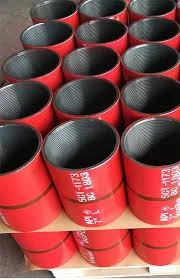- Afrikaans
- Albanian
- Amharic
- Arabic
- Armenian
- Azerbaijani
- Basque
- Belarusian
- Bengali
- Bosnian
- Bulgarian
- Catalan
- Cebuano
- Corsican
- Croatian
- Czech
- Danish
- Dutch
- English
- Esperanto
- Estonian
- Finnish
- French
- Frisian
- Galician
- Georgian
- German
- Greek
- Gujarati
- Haitian Creole
- hausa
- hawaiian
- Hebrew
- Hindi
- Miao
- Hungarian
- Icelandic
- igbo
- Indonesian
- irish
- Italian
- Japanese
- Javanese
- Kannada
- kazakh
- Khmer
- Rwandese
- Korean
- Kurdish
- Kyrgyz
- Lao
- Latin
- Latvian
- Lithuanian
- Luxembourgish
- Macedonian
- Malgashi
- Malay
- Malayalam
- Maltese
- Maori
- Marathi
- Mongolian
- Myanmar
- Nepali
- Norwegian
- Norwegian
- Occitan
- Pashto
- Persian
- Polish
- Portuguese
- Punjabi
- Romanian
- Russian
- Samoan
- Scottish Gaelic
- Serbian
- Sesotho
- Shona
- Sindhi
- Sinhala
- Slovak
- Slovenian
- Somali
- Spanish
- Sundanese
- Swahili
- Swedish
- Tagalog
- Tajik
- Tamil
- Tatar
- Telugu
- Thai
- Turkish
- Turkmen
- Ukrainian
- Urdu
- Uighur
- Uzbek
- Vietnamese
- Welsh
- Bantu
- Yiddish
- Yoruba
- Zulu
j55 coupling
Understanding the J55 Coupling Key Components and Applications
The oil and gas industry relies heavily on efficient and reliable equipment to ensure seamless operations. One of the critical components in this sector is the coupling, specifically the J55 coupling, which plays a significant role in connecting pipes and tubing in various applications. Understanding the features, specifications, and applications of J55 couplings is essential for industry professionals and operators.
What is J55 Coupling?
J55 coupling refers to a specific type of coupling used in drilling and production activities, particularly for oil and gas wells. The term J55 usually denotes the material grade of the steel used in the production of pipes and fittings, complying with the American Petroleum Institute (API) specifications. This grade is known for its excellent tensile strength, durability, and resistance to environmental factors, making it extremely suitable for downhole and surface applications.
Key Features
1. Material Composition J55 couplings are made from high-quality carbon steel, which is engineered to perform effectively under high pressure and temperature conditions commonly found in oil and gas extraction.
2. Strength and Durability The tensile strength of J55 steel typically measures around 55,000 psi, which ensures that the coupling can withstand significant mechanical stress. This characteristic is vital for preventing leaks and failures during operation.
3. Established Standards J55 couplings conform to API 5CT specifications, ensuring that they meet industry-standard requirements for safety and performance. This adherence guarantees compatibility with other equipment and components used in oil fields.
4. Versatile Applications J55 couplings can be deployed in various environments, including onshore and offshore drilling, production tubing, and casing systems. Their versatility makes them a popular choice in many drilling projects.
j55 coupling

Applications of J55 Couplings
J55 couplings are integral to several applications within the oil and gas industry
1. Well Construction Used in the construction of wells, J55 couplings connect segments of tubing or casing, facilitating fluid transfer and providing structural integrity to the wellbore.
2. Hydraulic Fracturing In hydraulic fracturing (fracking), J55 couplings help maintain pressure while mixed fluids are injected into rock formations, thus aiding in the extraction of petroleum and natural gas.
3. Production Operations J55 couplings are frequently employed in production settings to connect various pipeline sections, ensuring the safe transportation of hydrocarbons from the wellhead to processing facilities.
4. Maintenance and Repairs Their robust design also makes J55 couplings suitable for maintenance and repair applications, allowing for easy disconnection and reconnection of sections of piping without compromising the system's integrity.
Conclusion
In conclusion, J55 couplings are a crucial component in the oil and gas industry, offering strength, durability, and versatility for various applications. Understanding their specifications and applications allows industry personnel to make informed choices about equipment selection and maintenance strategies. As the demand for energy increases globally, reliable components like the J55 coupling will remain essential for the efficient operation of oil and gas systems, reinforcing their significance in the industry.
-
Tubing Pup Joints: Essential Components for Oil and Gas OperationsNewsJul.10,2025
-
Pup Joints: Essential Components for Reliable Drilling OperationsNewsJul.10,2025
-
Pipe Couplings: Connecting Your World EfficientlyNewsJul.10,2025
-
Mastering Oilfield Operations with Quality Tubing and CasingNewsJul.10,2025
-
High-Quality Casing Couplings for Every NeedNewsJul.10,2025
-
Boost Your Drilling Efficiency with Premium Crossover Tools & Seating NipplesNewsJul.10,2025







